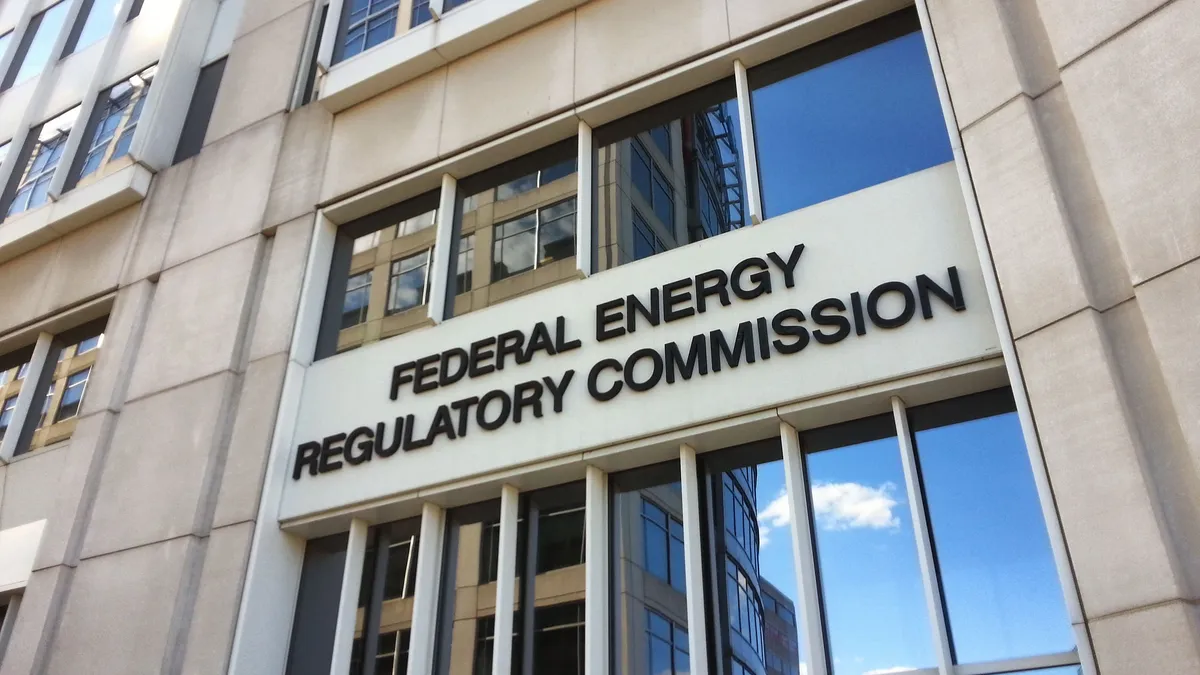Dive Brief:
- The Federal Energy Regulatory Commission (FERC) will hold a technical conference May 1-2 to discuss how state support for certain generation resources affects wholesale power markets in the eastern United States.
- The conference comes as a number of states institute or consider "around-market" mechanisms to support particular generation resources, such as "zero-emission credits" for nuclear plants in New York and Illinois.
- Independent generators consider the policies to be discriminatory against other power resources and argue they are preempted by FERC's authority to regulate interstate power trading. They and other stakeholders have asked FERC to intervene, concerned the incentives could threaten price formation in wholesale markets.
Dive Insight:
FERC's announcement of a technical conference on "around market" generation supports comes as multiple states in the Eastern Interconnect are taking action to prop up power plants at risk of retirement.
The first high-profile case was in Maryland, where the state sought to ensure a natural gas plant would be able to bid into PJM electricity markets. The Supreme Court threw that program out in 2015's Hughes v. Talen Energy, ruling that states could not directly intervene in the outcomes of wholesale power markets.
In Ohio, utilities FirstEnergy and AEP tried a similar scheme, winning approval from regulators in 2016 for guaranteed 20-year power purchase agreements for a group of at-risk coal and nuclear plants. But FERC stepped in to block those supports, leading the utilities to revise their requests and sell off some of the plants.
More recently, a group of states have sought to protect nuclear plants from retirement on environmental grounds. Last year, New York regulators unanimously approved "zero-emission credits" for three upstate nuclear plants, delivering nearly $1 billion to the plants to preserve their carbon-free generation.
That program became a model for Illinois legislation, passed in December, that will buttress two at-risk nuclear plants in the state. And Connecticut lawmakers are currently considering a similar scheme to support the Millstone nuclear facility.
In each case, states sought to protect particular generators from the competitive pressures of wholesale electricity markets. Across the U.S., low gas prices and stagnant power demand have pushed down energy market revenues, making it more difficult for aging coal and nuclear plants to compete.
These market dynamics, FERC noted, create a conflict for state policymakers who seek to preserve particular power plants for their enviornmental or economic development attributes.
"Because the wholesale competitive markets, as currently designed, select resources based on principles of operational and economic efficiency without specific regard to resource type, there is an open question of how the competitive wholesale markets ... can select resources of interest to state policy makers while preserving the benefits of regional markets and economic resource selection," FERC said in its notice.
ISOs and RTOs throughout the Eastern Interconnect have held discussions over how reform wholesale market models, FERC noted. Changes to energy markets have generally focused on "valuing various resource attributes," such as fuel security or environmental impact, while capacity market reform proposals have "generally focused on ways to preserve the integrity of the capacity market, while also allowing customers to receive resource adequacy benefits from state supported resources."
The technical conference will focus these reform proposals and weigh the roles of state policies and wholesale markets in determining the resource composition across their jurisdictions.
Solutions, federal regulators wrote, range from state policies being satisfied completely through wholesale markets to models where "state policies would be achieved outside of the wholesale markets, and the wholesale markets would be designed to avoid conflict with those state policies."
A number of power sector stakeholders have called for FERC to give guidance on around-market issues, worried that financial support for certain plants could threaten price formation. In a brief filed against New York's nuclear supports, an independent generator group called them an "existential threat" to organized markets.
“If [FERC] wants to preserve their market structure, they need to start coming up with answers for what states perceive as real policy deficiencies in these markets,” Ray Gifford, a former Colorado regulator told Utility Dive last year. “I'm not sure what they'd do, but their market experiment is in jeopardy, and the states, which still have a lot of power, some of them look poised to reject it."
The technical conference is scheduled for May 1 and May 2 at FERC headquarters in Washington, D.C. It is open to the public.













